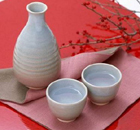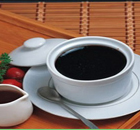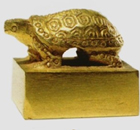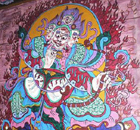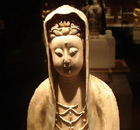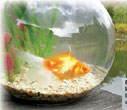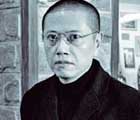Delicacies
A taste of authentic Shanghai
By Lu Hong (China Daily)
Updated: 2010-05-07 11:17
 |
Large Medium Small |


Visitors to the Expo should head to Jade Garden, the city's No 1 Shanghainese restaurant, which has set up two outlets in the Expo Garden, Lu Hong says.
A taste of authentic Shanghai cuisine will be an important and memorable dining experience for visitors to the Expo 2010 Shanghai, especially if they want to better appreciate the traditions and culture of China's most populous city.
In the Expo Garden, there are about 100 Chinese restaurants providing tasty dishes from all parts of the country. But the one that stands out is Jade Garden, which is offering a delightful culinary interpretation of fine dining Shanghai style, known as su zhe hui.
Su zhe hui is a combination of Suzhou and Zhejiang styles, which are widely believed to be the essence of Shanghai cuisine. Since it opened in 1999, the restaurant has won fame for serving traditional and creative Shanghainese cuisine in a sophisticated setting.
Because of this, the restaurant was invited to set up two outlets at the Expo Garden, one in Zone C and another in Zone D. The outlet in Zone C, opposite the Slovakia Pavilion, is in midst of Europe Square, close to a number of popular country pavilions and where dozens of performances and shows are held daily.
The outlet in Zone D, on the Puxi side of the Expo Garden, will impress visitors not only with its delightful food, but also with its view. Diners can enjoy top-notch cuisine while taking in vistas across the Huangpu River to the amazing architecture of the Expo pavilions and incredible skyline of Pudong.
Johnson Zhu, the chief chef of Jade Garden, said the restaurant selected the best staff and most popular dishes for its Expo outlets.
"We are required to serve food representing the highest culinary standards of our business," Zhu said. "Besides that, bones, shells and packages have to be removed before serving to avoid producing rubbish. This is in keeping with the 'low-carbon' lifestyle encouraged by the Expo organizers."

Mizhi huofang (sliced ham with honey sauce) is one of the chef's recommendations. The restaurant only selects the best cuts of ham from Jinhua in Zhejiang province, an area known for producing the best ham in China. The restaurant uses a traditional cooking method passed down from 1930s and improves on it by creating a "secret" sauce. The meat is tender and tastes sweet outside and salty inside. The chef suggests diners make reservations specifically asking for mizhi huofang because of the big demand for the dish.
The restaurant created two cuisines for the Expo: Stir fried shrimp with fragrant vegetables and leeks; and sauted sea cucumber with fresh crabmeat. The former wins diners' hearts with its beautiful color and delicious taste, while the later is outstanding for the high-quality sea cucumber and crabmeat, which are imported from South Africa and Sri Lanka.
Stir-fried shrimp with fragrant vegetables and leeks is a must-try dish. The chef chooses the best shrimp from Malaysia, mixes them with a dozen different seasonings and flavorings, and cooks them in oil at a low temperature. The way it is served is also impressive: The shrimp are arranged in the shape of peony, China's national flower, which symbolizes prosperity and auspiciousness.
The dish smells fragrant when served, is fresh, juicy and sweet when first tasted, but with a delightful spicy aftertaste.

